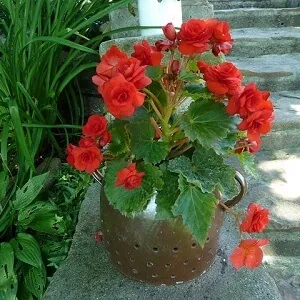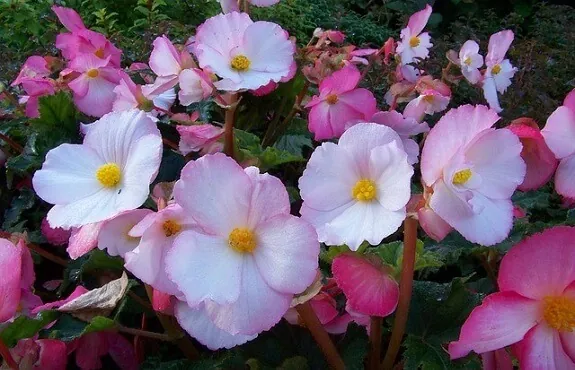 Begonias are known for their variety of colours and patterns, with ruffled and smooth shaped leaves. They create a beautiful ambiance and can grow beautifully when their needs are met. It is considered as one of the most favoured plants by gardeners because of its quirky foliage and its captivating flowers. It is often used indoors or in an outdoor kitchen or patio. Begonias in pots or in hanging baskets can add colour to your home.
Begonias are known for their variety of colours and patterns, with ruffled and smooth shaped leaves. They create a beautiful ambiance and can grow beautifully when their needs are met. It is considered as one of the most favoured plants by gardeners because of its quirky foliage and its captivating flowers. It is often used indoors or in an outdoor kitchen or patio. Begonias in pots or in hanging baskets can add colour to your home.
Although Begonia requires yearly planting, it is well worth it when cultivated. Aside from its aesthetic value, another reason why gardeners love it is because it is not needy. The plant can grow well indoors, in a garden and under low-light. Growing Begonias is not as hard as you think. It is a low maintenance plant that can adapt in different environmental conditions. However, it grows best in light shade, with rich and well-drained soil. Placing them in pots or containers can brighten the house especially during winter.
Preparation
Prepare your container. It could be a hanging basket or a large flower pot with enough holes for drainage. Make a potting mix. This is a combination of soil, peat moss and fertiliser. The peat moss should be soaked in boiling water and allowed to cool before combining with soil so that the peat moss will be saturated and at the same time, it will sterilise the soil mix. The mixture should be 2/3 peat moss and 1/3 soil. The soil should be rich and loose.
Location
Begonias like shades or part shade with regular indirect sunlight. If it is placed indoors for the first time, this plant should be kept near a sunny window. This will allow you to regulate how much sun it gets. You may notice leaf dropping during the first week, but you don’t have to worry. Leaf dropping is normal until the plant can adapt to its new environment.
Planting and Watering
Begonias can be propagated through seedlings, through stem cuttings, through division or through leaf propagation. Most people prefer cuttings since the seeds are very fine and it will take 2 to 3 weeks to germinate. When planting, the top of the bulb, or the seeds or the root ball should be covered with just enough soil to allow air circulation. If it a small plant, it is best that you use the division process. You should loosen the root ball and break it apart before placing it in a hole. After planting, you need to water it regularly. Allow the soil to be moist but not drenched. Wait for the soil to be dry before next watering to prevent root rot and fungal diseases. Begonias cannot tolerate heavy watering. Begonias should be placed indoors during heavy rains in order to avoid drowning.
Caring
If the pot that you are using is flat bottomed, you can put gravel on a saucer, covered with water. Put the pot on top of the gravel in order to increase humidity in the surroundings. If gravel and saucer is not available, moist the environment not the plant by using a mist bottle every few days.
Maintenance
“Dead-head Begonia” cannot be avoided, it is when flowers of the Begonias begin to brown and die. You can cut or pull dead flower to promote new growth and divert nutrients to the plant.
Protection from Pests and Cold
Pests could damage and kill your begonias so you have to carefully observe your plants. Mealy bugs are common, but it can be controlled by using rubbing alcohol in a bottle and spraying it on the leaves. Slugs and snails can be controlled by putting crushed egg shells around the base of the pot. Mild insecticides can be also used to control other pests.
Begonias should be put inside the house when it begins to freeze outside and should be placed under lowlight or near the window to receive enough sunlight.




0 Comments